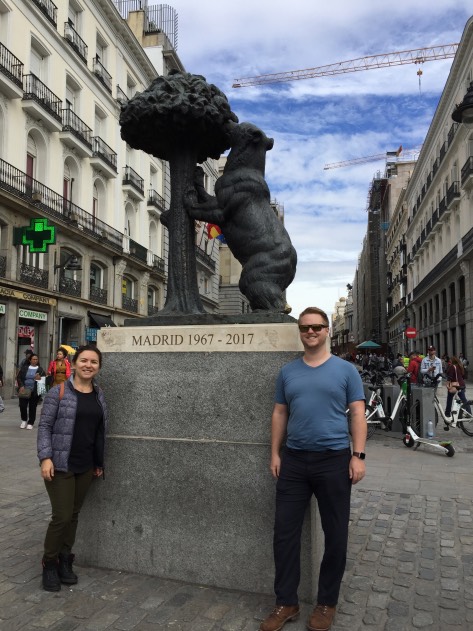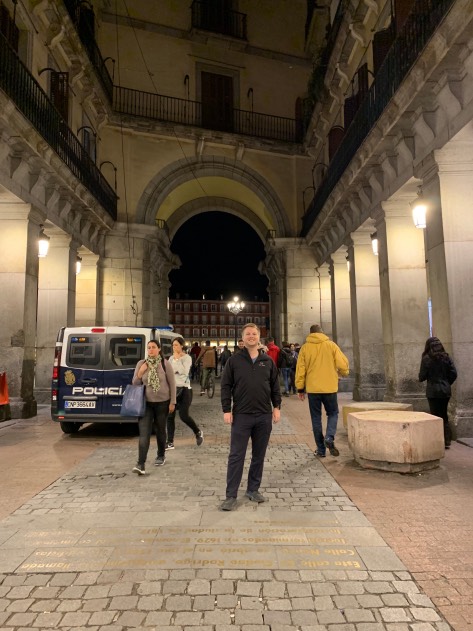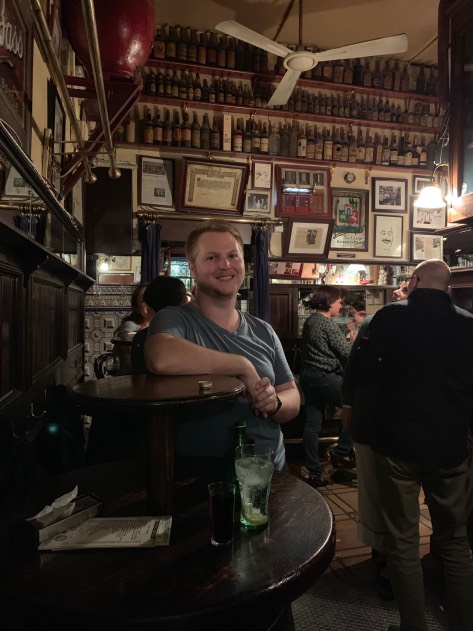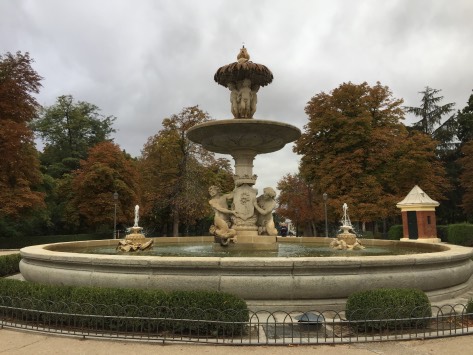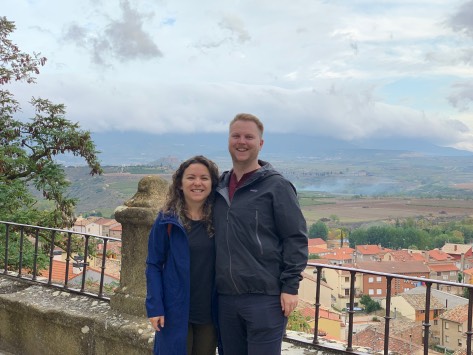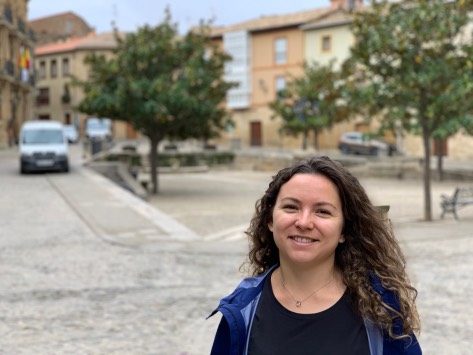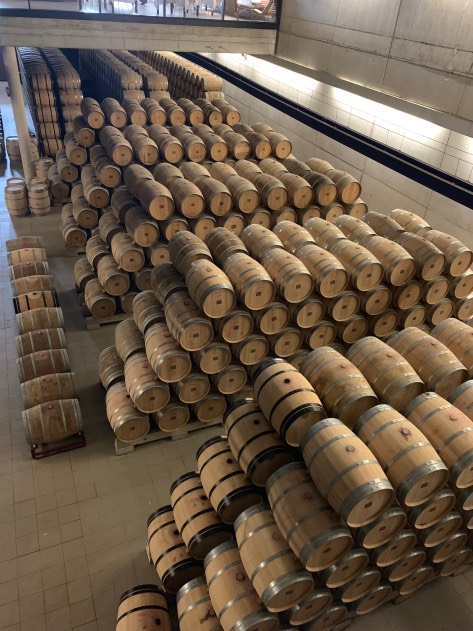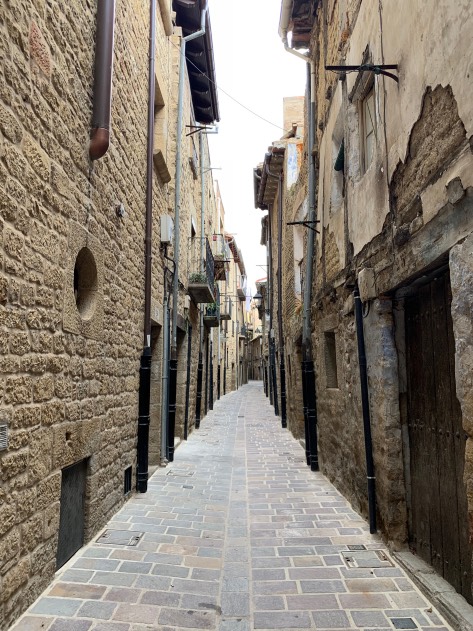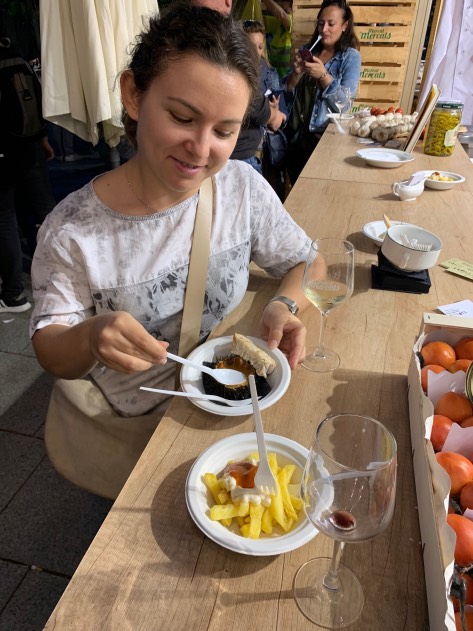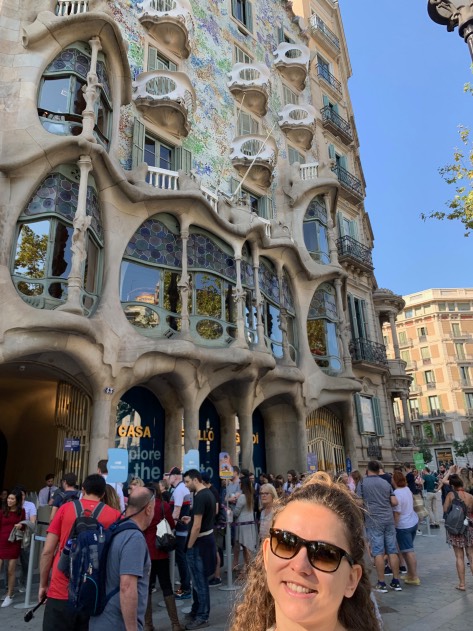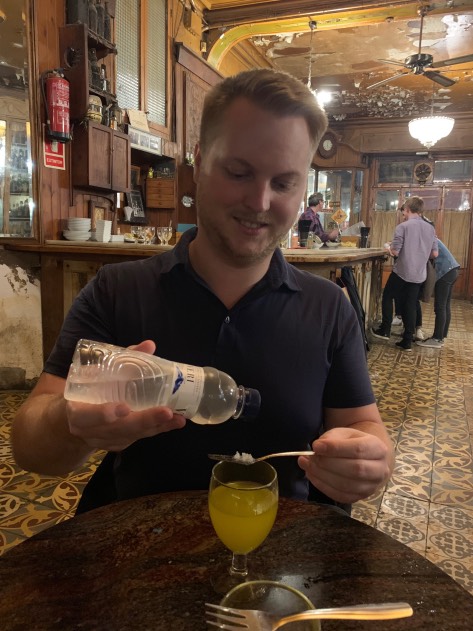Travel tales
Adventures from here, there and everywhere.
Spain: Madrid, la Rioja and Barcelona
Oct 10-30, 2018
Madrid
I have fond memories of visiting Madrid over a decade ago (wow!). It seemed so beautiful and very much a party place. Going back now, part of me wanted to nostalgically re-live being sixteen again; it's needless to say that this is difficult to achieve at the ripe age of twenty-eight. Even though I've changed very much since my last visit, Madrid is still the same grand city with endless parties stretching into the early hours of the morning.
We arrived by plane from Lisbon on October 10th as it was cheaper and faster to fly than to take the train (wish this was true in Canada!) and stayed in a lovely flat in the eclectic Melasaña neighbourhood. Think small hipster stores selling baby clothes with hand-printed dog pictures on them and themed cafés (one tropical place has sand on the floor to make your cocktail really taste like the Carribean.) I don't quite remember what we did during most of our time in Madrid, perhaps because we unknowingly arrived during a week with a long weekend of one of Spain's biggest holidays, Fiesta Nacional de España.
Madridians, and perhaps most of Spain other than the north, have a strict flow of the day. Generally, it begins at 9 am, which is followed by a 30 min break for breakfast at 10 am. Lunch is from 2-3 pm where most shops are closed and cheap restaurants offering set menus are rammed with anyone and everyone from office to construction workers grabbing a bite and a cerveza. The workday ends at 7 pm and a light dinner ensues, usually at a tapas bar, between 8 (really, it's weird to show up for dinner before that) and 10 pm. The fiesta continues until 4, 5, 6 am or until the places close. Trying to live out of this rhythm will result in hunger (getting anything to eat is impossible), frustration (shops are closed) and denial (they don't care what you want.)
We were lucky enough to get a private tour, of sorts, as a good friend of my moms lives in the outskirts of Madrid with her two children who are approximately my age. Petya and Lilko were my Madrid guides in 2006 and they happily suggested they tour Brendan and I this time as well. We spent a full day with Petya and Lilko's girlfriend, Rossio, showing us around all of Madrid's major sites-I think we walked close to 20 km that day! After that Petya's husband and Lilko joined us for tapas and beer including potatoes Spanish style (potato wedges with alioli), fried fish bites, croquettes with jamon (famous Spanish ham), fried pigs ears (a Madrid specialty!) and deliciously deep-fried octopus. The point is, everything is fried, lightly flavoured, and made to go with lots of beer!
Final words on Madrid: it's a big, beautiful city with something for everyone.
La Rioja
What's your favourite wine? Argentinian reds, French whites, Californian rosés?
Everyone has their favourites, and if you think you don't, you still probably do (unless, of course, you don't consume alcohol) because we all have our preferences for taste. Why? We all have different genetic make up... (I can hear you yelling, "we know that Sofiya!") That genetic makeup is responsible for the formation of a different "rug" of taste buds on each of our tongues. Yes, there five flavours we can all taste but they are interspersed in various quantities and locations in our mouth. This results in two people who are eating or drinking the same thing to experience it in (sometimes) vastly different ways essentially leading to what we call personal preference (ex: something is too bitter for one but just right for another). Of course, there are other factors at play such as the type of food and drink you've been exposed to growing up, ex: more or fewer spices, and other factors.
Now, I don't pretend to be a wineo (Urban Dictionary definition: A person who over appreciates wine to the point of being a douche, wears pretentious clothing, and wants to talk about nothing besides wine.) and I haven't tried every single type of wine there is but I do know my personal preferences. I love Rioja reds! They are often deep, with either lot of tannins or acid due to the type of soil the grapes have been grown in (chalky soil=more tannins, clay soil=more acid.) The tannins and/or acids in the wine help it age by acting as a natural preservative and allowing for complex flavours to form over time. The Spanish region of La Rioja has all the components for rich reds to be created.
While in Rioja, we took a one-day wine tour where we learned most of what I described above and got a technical overview of how the winemaking process is achieved in two different wineries: a small boutique family winery and a large-scale "factory-like" one. At the small winery, we were able to create our own mix of aged wines. The same grape juice is aged in different oak casks (American, Hungarian, French, Russian oak) that give the wine different characteristics. After about six months of aging, the winemaker can decide to create a blend of various oak flavours to achieve a special blend and either bottle the wine or continue aging. We had the opportunity to act like winemakers and first tasted wine aged for six months in American, Hungarian and French oak. Then we created our own mix of those options by adding various quantities of each. Brendan's mix was closer to the "traditional" mix of American and French oak, whereas I opted for a stronger flavour balance of American and Hungarian oak.
At the second winery, we had the opportunity to see the latest innovations in winemaking: a robot that separates the wineberries from the stem and there scans each one to decide whether it is the right size, ripeness, and other characteristics. The good berries are kept and the not so good ones sorted out-don't worry they don't throw them out, they go to the distillery to be made into brandy. The second interesting thing about this winery is that they make use of gravity for the winemaking process, which saves a lot of energy. This technique is borrowed from traditional Rioja winemaking 1-2 generations ago when everyone used to make wine at home. The grapes were loaded through a window on the first floor of the house and ferment there in a large stone tank. After fermentation, a plug with a sieve made of out vine branches in the bottom of the tank is opened and the wine is poured into huge barrels in the basement ready for consumption. The modern-day method is more or less the same with more steps.
Wine goes hand-in-hand with...? Food! In addition to amazing and cheap wine, La Rioja's towns have fantastic tapas bars. A few euros will get you the house special ex: lamb skewer, baked mushrooms with little shrimp inside, tiny beef steak with lightly spicy roasted green peppers covered in sea salt, everything always served with a side of sliced bocadillo (white bread rolls.)
La Rioja is great if you like red wine, otherwise, don't go there-it's mostly agricultural fields.
Barcelona
We stayed in Barcelona for almost a couple of weeks beginning October 20th, taking a train from La Rioja to Catalonia's capital city. What was most striking going through the countryside via train is that most of the regions we passed were very dry, rocky and overall difficult to farm or even inhabit. Catalonia, on the other hand, is very lush green and rich in vegetation. This makes it immediately very striking. Going into the city is equally interesting as Barcelona, known worldwide for its architecture, has spectacular buildings and design. Everywhere you look, there is something for your eyes to feast on.
As we learned on one of our Barcelona walking tours, this interesting architecture stems from nothing more than a rush of early 20th century nouveau riche to outdo each other in grandiose house building-some things never change. As trite as this is, the results are fantastic and that's how Gaudí started his career. On that note, the Sagrada Familia, Gaudí's biggest and probably most well know work, is still being completed, close to 100 years since the foundations were laid down. It was, in my opinion, very much worth a visit. I won't go into every detail about Barcelona and all the major tourist sites but it's fair to say that this city has its own vibe.
Finally, Barcelona was one of Brendan's favourite places. He enjoyed it for the vibrant nightlife and many food options.
That wraps up three very different but equally interesting, in their own right, places. It seems there are many more towns in Spain that have their own flavour, for example, the south of Spain that was once part of the Moorish empire, is very much influenced by that but that will have to be another time.
